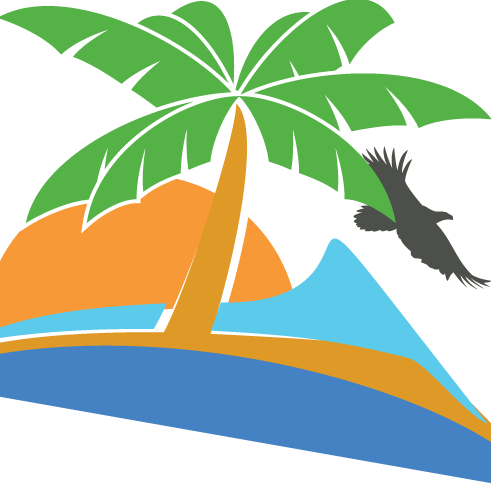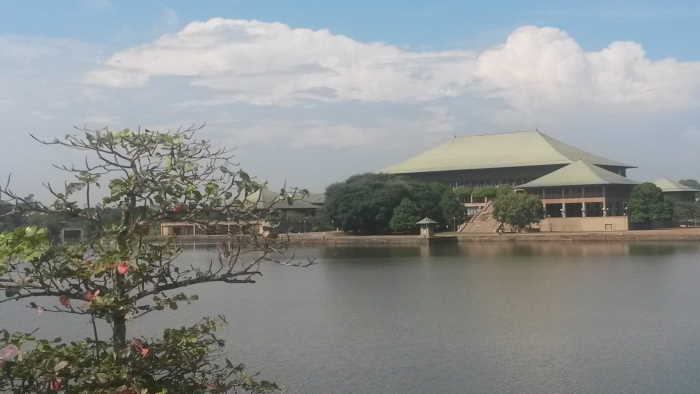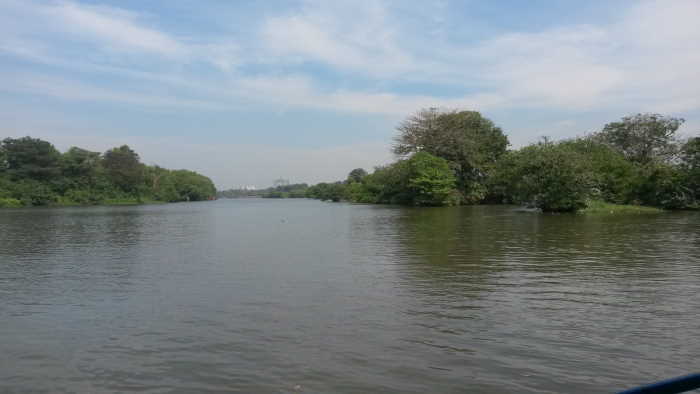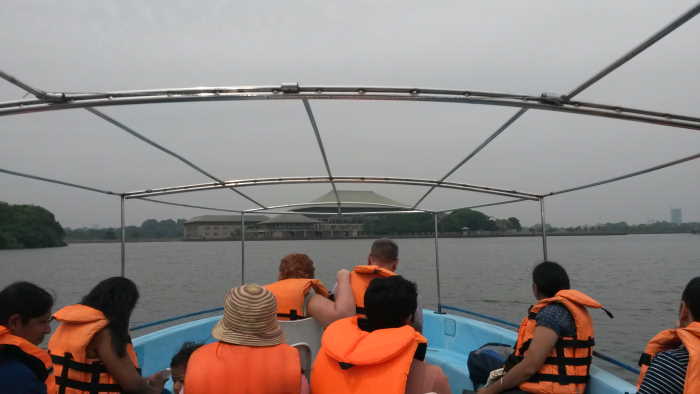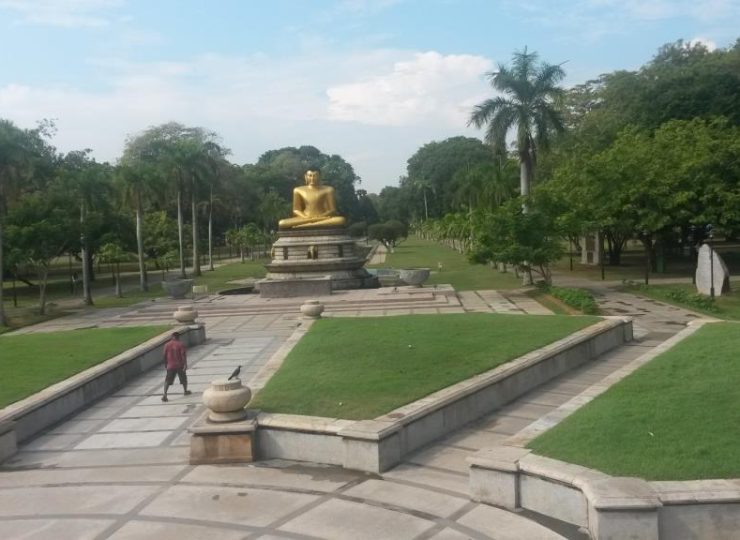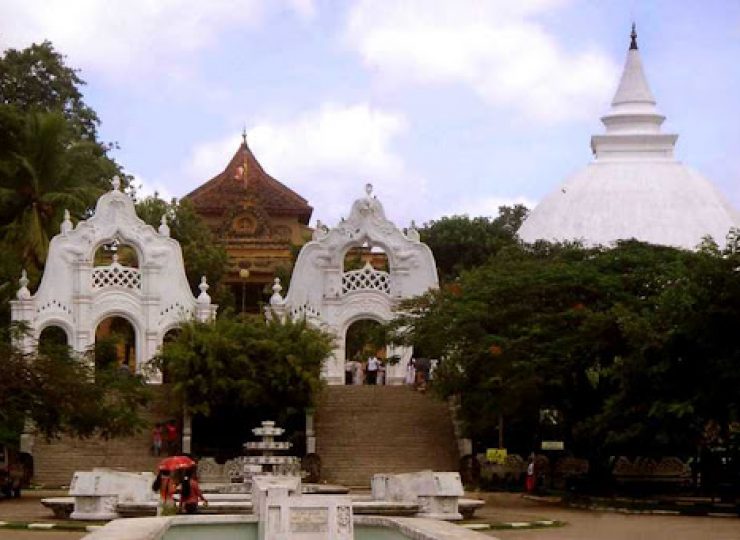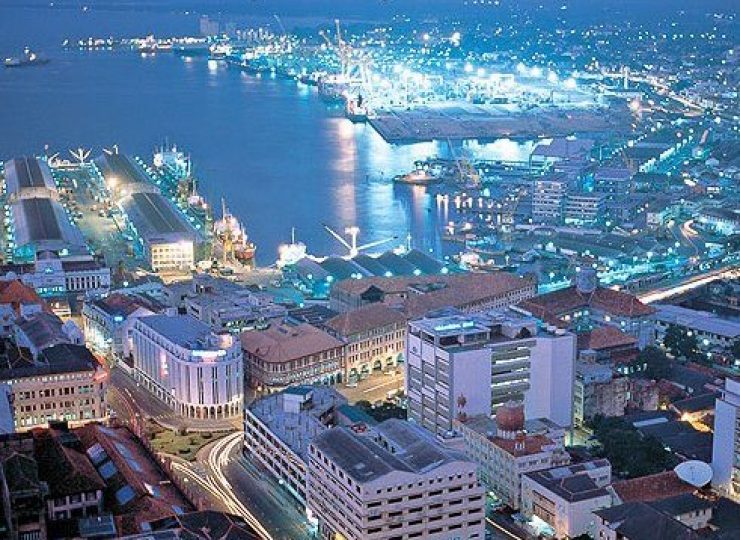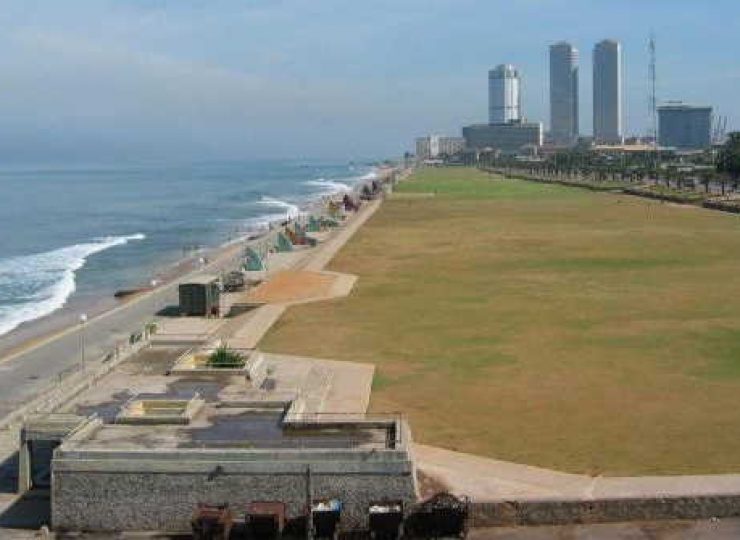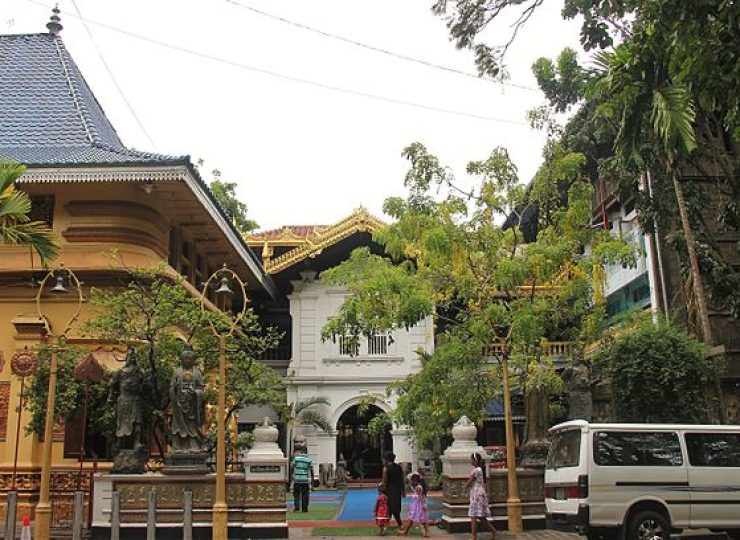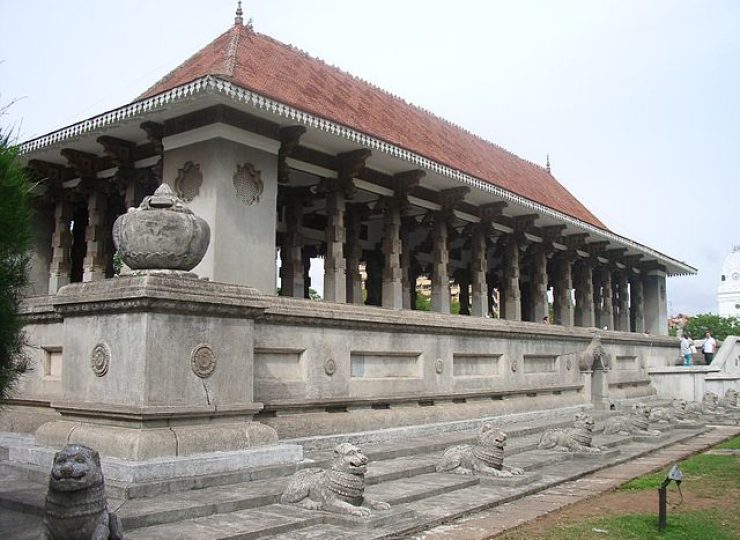Beyond, over the blue-arched bridge that crosses the lake, is the Diyatha Uyana, the market and restaurant hub of the Diyawanna Oya in its function as an increasingly important recreational site in the greater Colombo area.On the opposite shore is a new addition, a vintage train engine with a complement of assorted wagons.
But the natural beauty lies near the Diyatha Uyana edge of the lake, where the wetland is dominated by a small tree with pretty white flowers, the South Indian Plum (Syzygium caryophyllatum), known in Sinhala as dan. It is a threatened species according to the IUCN (International Union for Conservation of Nature), yet found in abundance here. It stands in water surrounded by myriad water plants such as reeds, ferns and lilies, an excellent example of aquatic flora diversity.
To proceed to the parliament area, take the Japan-Sri Lanka Friendship Road to view the architectural wonder within the Diyawanna Oya. But to experience the best of the wetlands at Beddagana, on your return journey turn left at the blue-arched bridge down Nippon Mawatha and you will enter a more rustic area, with the tree-shrouded Diyawanna Oya on one side and the extra archaeological benefit of glimpses of the fortress rampart, made from brown laterite or kabook, on the other. Farther on, the lake gives way to accessible rush and reed studded wetlands, a bird’s and birder’s paradise.
A measure of Sri Lanka’s extraordinary biodiversity is that the total number of bird species recorded in the Island is 492, of which 219 are breeding residents. The rest are migrants that settle in Sri Lanka from September to April to escape the winter of their northern breeding grounds. Thirty-four resident species use Beddagana as a breeding site, and 18 migrant species have been identified in the area.
The Diyawanna Oya is well-populated with aquatic birds, but Beddagana is considered the best spot for viewing them close to Colombo (together with the nearby Thalangama Wewa). The Beddagana wetland was gazetted as a Wildlife Sanctuary by the Department of Wildlife Conservation in 1984 due to its bird life. And, as I write, a Beddagana Biodiversity Park is being created that contains a bird sanctuary.
During the 15th Century the Kingdom of Kotte flourished in Sri Jayawardenepura Kotte, now the location of the Island’s parliament and the administrative capital, just a short drive from the centre of Colombo.The ancient capital of Kotte was a jala durgha (fortress surrounded by water), triangular in shape, with the stream-formed ‘lakes’ and associated marshes known as the Diyawanna Oya and Kolannawa Oya forming two sides, and a moat the third.
The wetland environmental value attached to the Diyawanna Oya is incalculable. Most of the area surrounding the parliament complex and elsewhere consists of low-lying freshwater marshland. Habitats as diverse as lily-filled ponds, outcrops of shrub land, grasslands lightly flooded during the monsoon, and the grey mudflats of old, can be found here, particularly in the Beddagana urban wetland.

